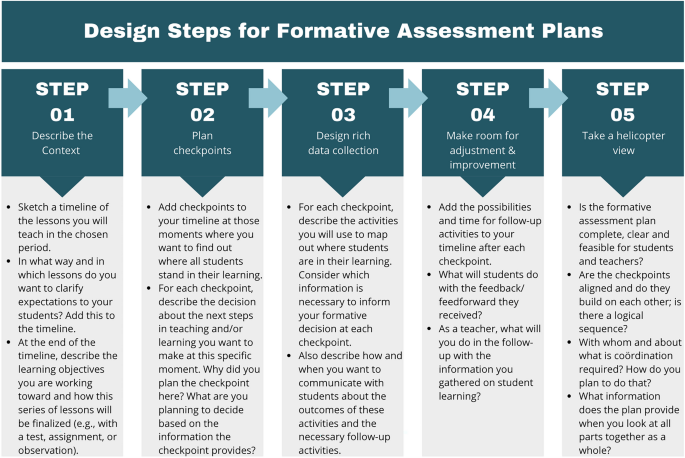Designing Formative Assessment That Improves Teaching and Learning: What Can Be Learned from the Design Stories of Experienced Teachers?
IF 1
Q3 EDUCATION & EDUCATIONAL RESEARCH
引用次数: 1
Abstract
Abstract This article reports on findings of a qualitative study that investigated the difficulties teachers encounter while designing formative assessment plans and the strategies experienced teachers use to avoid those pitfalls. The pitfalls were identified through an analysis of formative assessment plans that searched for potential threats to alignment, decision-driven data collection, and room for adjustment and improvement. The main pitfalls in the design process occurred when teachers did not explicitly and coherently link all elements of their formative assessment plan or when they did not plan to effectively use information about student learning to improve teaching and learning. Through interviews with experienced teachers, we identified seven design strategies they used to design formative assessment plans that were aligned, consisted of decision-driven data collection, and left room for adjustment and improvement. However, these experienced teachers still encountered difficulties in determining how to formulate the right decisions for decision-driven data collection and how to provide students with enough room for improvement. Lessons learned from the design strategies of these experienced teachers are incorporated in design steps for formative assessment plans all teachers can use.

设计形成性评估以改善教与学:从经验丰富的教师的设计故事中学到什么?
本文报告了一项定性研究的结果,该研究调查了教师在设计形成性评估计划时遇到的困难,以及经验丰富的教师用来避免这些陷阱的策略。陷阱是通过对形成性评估计划的分析来确定的,该评估计划寻找对校准、决策驱动的数据收集以及调整和改进的空间的潜在威胁。当教师没有明确和连贯地将其形成性评估计划的所有要素联系起来,或者当他们没有计划有效地利用有关学生学习的信息来改进教与学时,设计过程中的主要陷阱就会出现。通过采访经验丰富的教师,我们确定了他们用来设计形成性评估计划的七种设计策略,这些策略是一致的,包括决策驱动的数据收集,并留下调整和改进的空间。然而,这些经验丰富的教师在如何制定正确的决策来进行决策驱动的数据收集以及如何为学生提供足够的改进空间方面仍然遇到困难。从这些经验丰富的教师的设计策略中吸取的经验教训被纳入所有教师都可以使用的形成性评估计划的设计步骤中。
本文章由计算机程序翻译,如有差异,请以英文原文为准。
求助全文
约1分钟内获得全文
求助全文

 求助内容:
求助内容: 应助结果提醒方式:
应助结果提醒方式:


